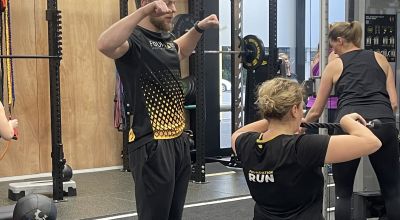The lumbar spine, or low back, is a remarkably well-engineered structure of interconnecting bones, joints, nerves, ligaments, and muscles all working together to provide support, strength, and flexibility.
The low back supports the weight of the upper body and provides mobility for everyday motions such as bending and twisting. Muscles in the low back are responsible for flexing and rotating the hips while walking, as well as supporting the spinal column. Nerves in the low back supply sensation and power to the muscles in the pelvis, legs, and feet.
There is a significant overlap of nerve supply to many of the discs, muscles, ligaments, and other spinal structures, therefore it is often not possible to make a precise anatomical and pathological diagnosis, however this does not hinder management and treatment.
Acute, or short-term back pain lasts a few days to a few weeks. Most low back pain is acute. It tends to resolve within a few days/weeks with treatment and there is no residual loss of function. In some cases a few months are required for the symptoms to disappear.
Causes:
Acute low back pain is usually of sudden onset and is often triggered by a relatively minor movement such as bending to pick up an object. This minor incident may be more indicative of fatigue or lack of control, rather than tissue overload.
Symptoms:
Back pain can range in intensity from a dull, constant ache to a sudden, sharp or shooting pain. The pain is usually in the lower lumbar area and may be central, bilateral (on both sides), or unilateral (on one side). It may radiate/refer to the buttocks, hamstring, or lower leg. Sharp, lancinating pain in a narrow band down the leg is called radicular pain and is often associated with nerve irritation.
How can Physiotherapy help?
Physiotherapy assessment aims to identify impairments that may have contributed to the onset of the pain or increase the likelihood of developing persistent pain. These include biological factors (e.g. weakness, stiffness), psychological factors (e.g. depression, fear of movement and catastrophisation) and social factors (e.g. work environment). Lower back pain physiotherapy treatment reduces the likelihood of recurrent back pain flare-ups.
Related posts

If you want faster recovery and long-term results, your rehab needs to look like the life you want to get back to.

Research shows that switching sports in the off-season is one of the best ways for 12–18-year-olds to boost performance, stay healthy, and keep sport fun

Here are a handful of reasons why integrating strength training into your running routine is a good idea







